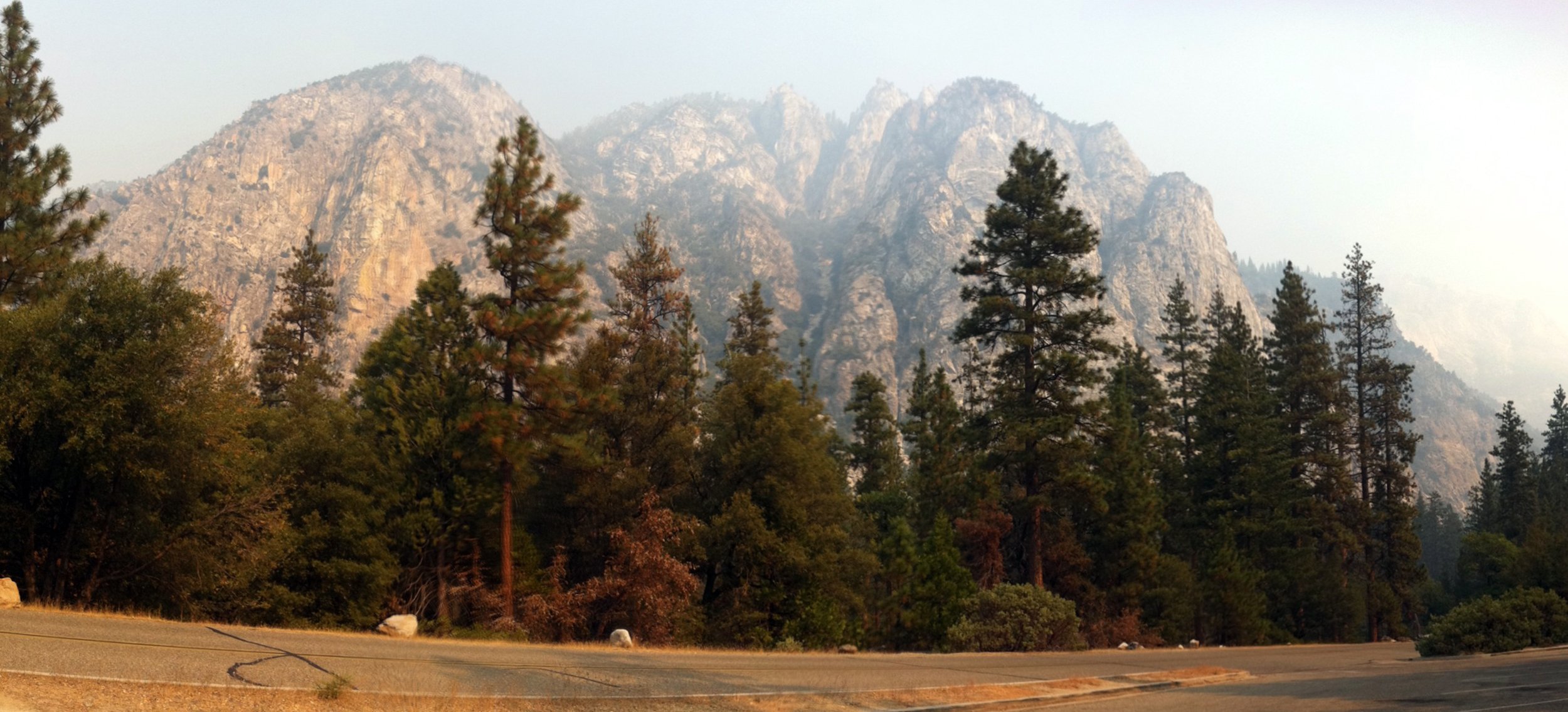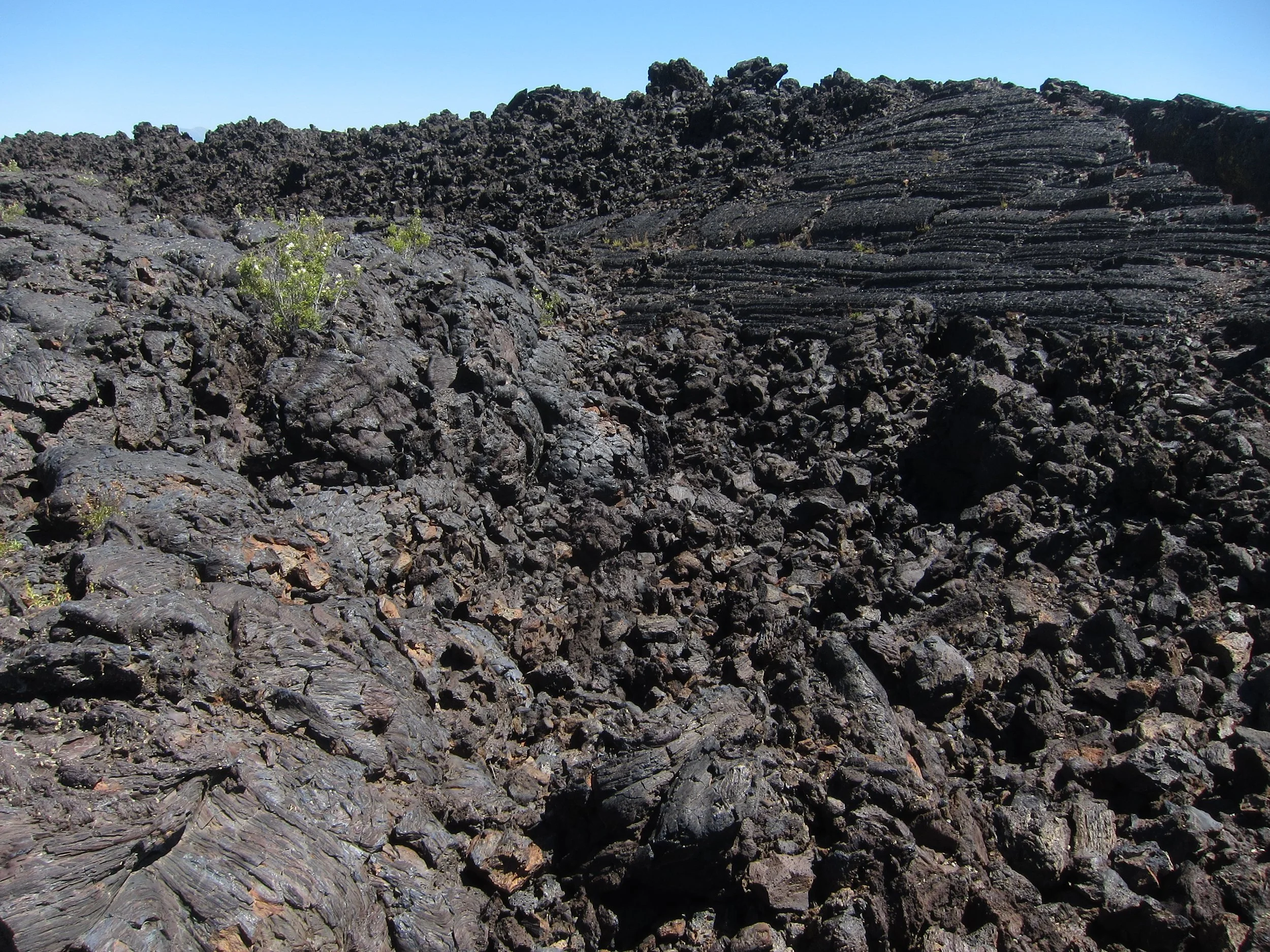
Page 3 of 6
Sequoia National Park, California
Brave young cowboys of the near north side, mount those bridge rails, ride all night
After flying into Fresno, California (whose airport has the unfortunate code of FAT), we’ve taken the mostly uphill drive to Sequoia Kings Canyon National Park, high in the Sierras. To show you just how high we really are, let’s look at this short (but steep) all step trail up Moro Rock. The rock hangs right on the edge of the valley and on the edge of those High Sierras, with killer views in all directions.
You can't go to Sequoia without seeing sequoias. They're all over here, in numbers and settings far more impressive than the far better known ones in nearby Yosemite. Sequoias are the world's largest tree by volume (redwoods are taller) and the world's largest living thing (take that whales and I guess everything else).
Sequoia Kings Canyon, like all National Parks, can be both a place of wonder as well as a hellish death trap. This (slightly blurry, sorry) photo of the park newspaper warns of drowning, plague, poison oak, ticks, giardia, hypothermia, rattlesnakes, lightning, west nile virus, carbon monoxide, ozone pollutions and cougars, but actually forgets to mention the one deadly danger I had to worry about this trip: fire.
Last night when I was at the lodge at Sequoia National Park, you could sometimes smell a distant forest fire, just like I remembered from a trip to Alaska a few years back. Sure enough a good part of the National Forest land between the two parks was in fact on fire, and that distance appeared to be closing quickly. On the only road in or out of Kings Canyon, firefighters were stationed and ready to hold a line in the morning as I entered the park. By late afternoon they were using hoses to keep the trees wet as actual smoky fires spread only a hundred feet or so from the road. I got out unscathed and no one seemed too worried, except possibly me I guess.
Kings Canyon seems to be the far less popular part of Sequoia and Kings Canyon, but maybe the forest fires had something to do with it. Geography also might be a factor- the front part of Kings Canyon has some sequoias and a good amount of visitors, while the part with the canyon is a good hour drive away on a dead end road. At the very end of that dead end road you can keep going- like I did- into the backcountry and up in the narrowing canyon. I ended up hiking nine and a half miles on a day hike, something that my legs have yet to forgive me for taking. The hike though wasn't all that bad, that part of Kings Canyon had a relatively low elevation (about 3000') and the hike had just under a thousand foot elevation gain. It also followed a terribly scenic stretch of the canyon, with roaring rivers, Yosemite like canyon walls and sometimes quiet stretches where (discounting the awful bugs, lizards and intermittent deer) it was just me and the forest.
Generally being at a National Park as it burns is not a good thing, but it does at least have one odd advantage. The cliffs and mountains that framed the canyon seemed faded and layered and almost like two dimensional cut outs behind all that smoky haze, an interesting effect that somehow heightened the drama of an already dramatic place.
We escaped the fire and made it all the way to coastal Maryland and Assateague Island National Seashore, just south of Ocean City. Here one of Assateague's many (many) majestic wild horses poses for visitors, right after it took a massive dump on the park road. It's great to see the horses everywhere but not so great to see the horse crap everywhere. Maybe that's just me.
Assateague is more than just wild horses and wild horse crap everywhere, although to be honest, the horses (but not the horse crap) are a major reason to visit. Non horse attractions include the Marsh Walk on the bay side of the park, and all the beaches you would expect to see at a national seashore.
Now we’re in Kansas City, Missouri at the National World War I Museum, one of the best (if not the best) historical museums I have ever been to.
The museum is underground below a tower (which of course you can go up), and the entry is over a glass bridge under a skylight with views back up to that tower, The glass bridge enters over a field of poppies (which of course makes sense) and leads inside to galleries filled with artifacts and its very own terrifying walk through trench, filled with all of the horrors you might expect from a recreation of the first real mechanized war.
If I’m in Kansas City and only have time to do three things, one is going to be the terrific world class World War I Museum, and the second is easily going to be a visit to Steven Holl's addition to the Nelson Atkins Museum of Art. Such a great building (or is it buildings).
As for the third, it’s going to be BBQ. That’s just what you do when you visit Kansas City.

